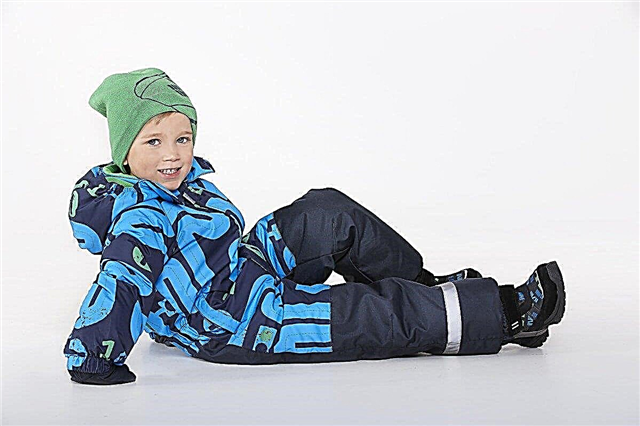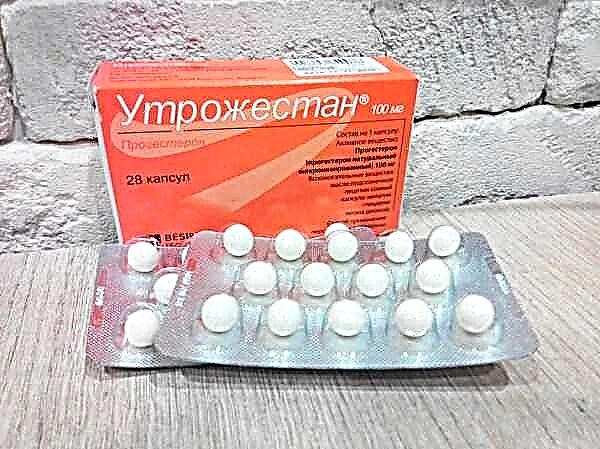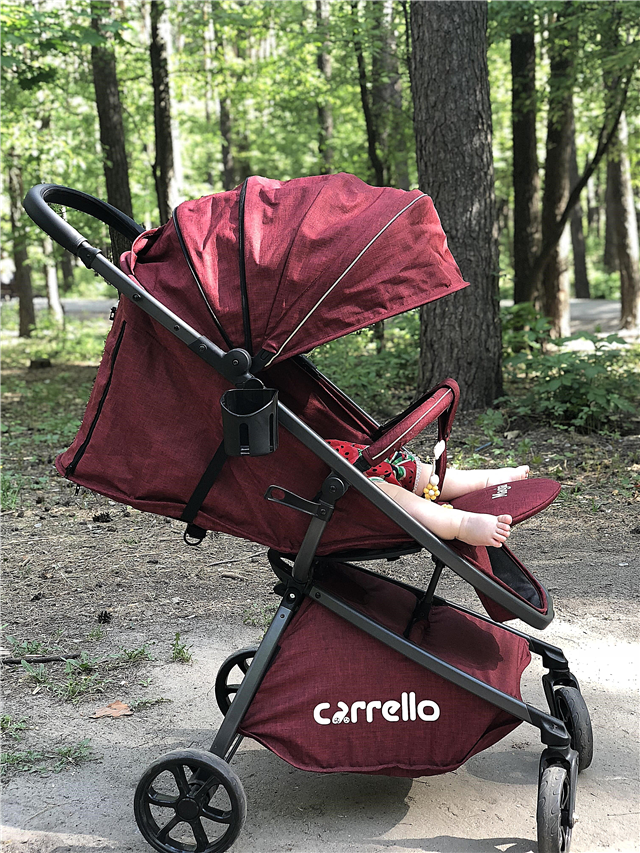
Flat feet is an unpleasant and rather dangerous diagnosis that cannot be ignored. Such a defect causes disturbances in gait, posture, negative changes in the spinal column and a host of other pathologies.
Why flat feet begin in children, how to recognize signs of anomalies of feet in a child and how to treat a child, we will tell in this article.

What it is
Flat feet in children is a deformation of the skeleton of the feet. With it, the shape changes, the longitudinal or transverse arch descends and flattens. At the same time, across the foot is deformed in more than half of all cases, and only in 30% of cases, flat feet are longitudinal.

This diagnosis is the most frequently heard in the offices of pediatric orthopedic surgeons. Most of the patients are adolescents. Somewhat less often, pathology is detected at the age of 7-8 years, even less often in children under 7 years of age.
The official medical literature even reports about 3% of infants who can be diagnosed with flat feet, but this information is controversial.
The fact is that all babies, without exception, are born with flat feet. Their legs in the first year of life are not adapted to move in space in an upright position, and therefore there is no natural need for the foot to immediately have high and regular arches. Such flat feet are considered quite natural, physiological.

As the load on the lower extremities grows and increases, the real formation of the feet begins. Most often, the first prerequisites for the development of foot pathology are laid at the age from 7-8 months to 1.5-2 years.
The muscles of babies who are just starting to get up are still very weak, the cartilage tissue is elastic, so any violation during the first load on the legs can provoke the development of flat feet.
However, there is nothing wrong with infant flat feet. If the development of the child proceeds normally, if the physical activity on the lower extremities increases gradually, then the feet will normalize by the age of 7-8. Unfortunately, this is not always the case.

Flat feet cannot be considered a harmless ailment. The natural function of the foot is support and shock absorption. When the arches of the foot are flattened, they stop damping when walking in the required volume, respectively, the load on other parts of the musculoskeletal system increases significantly, and this leads to pathologically rapid wear of the knee and hip joints, and the spine.
Disturbances of the support system, in turn, have a significant impact on the correct functioning of many internal organs.
It is possible to assert with confidence that a child has a flat foot only closer to the age of 7-8, when the main stage of the intensive formation of the support shape of the lower extremities is completed.

Causes of occurrence
Congenital flat feet, not physiological, but pathological, is rarely recorded. It is associated with the processes that took place in utero, and with the heredity of the baby.
If the relatives of the baby suffer from flat feet, then the likelihood of a congenital form increases.
Intrauterine causes - underdevelopment or abnormal development of muscles, ligaments that form the longitudinal and transverse arch, shins.

Much more often flat feet are acquired disease. But he can also have congenital causes. Such cases, in particular, include congenital weakness of the connective tissue. In children with such a problem, flat feet are formed due to insufficient connective tissue.
This is far from the only problem. Deficiency of connective tissue in parallel is accompanied by either an additional heart chord, or myopia, or kinks and deformation of some internal organs (most often - the gallbladder).
Platypodia often develops in children who, at an early age, suffered from rickets, which affects the skeletal and muscular systems. Children who have suffered fractures of the ankle and heel bones are also at risk, since there is a risk of improper bone fusion after injury.

Paralysis of the lower extremities, both full and partial, can cause abnormal development of the foot. Paralysis can be a manifestation of past poliomyelitis, cerebral palsy, as well as frequent convulsive syndrome of the lower extremities, which can occur against the background of certain neurological diseases.
Unfortunately, parents, without knowing it themselves, often become the culprits for the development of flat feet in their child. This diagnosis can lead early verticalization of the baby.
If a crumb, who has not yet really learned to crawl confidently, is forcibly placed in walkers and jumpers in order to rejoice at the baby's successes, then the load on the spine increases significantly. The child's legs are also not ready for an upright position of the body, and weak muscles and ligaments, as a result, are formed incorrectly under excessive load.

Flat feet also threaten overweight, obese babies, babies whose parents choose the wrong shoes, uncomfortable and unhealthy.
If the child walks too much, runs or stands for a long time, this also contributes to the malformation of the arches of the foot. Flat feet are often diagnosed in children who suffer from planovalgus deformity of the feet.
Despite all the above reasons, the most powerful influence on whether a child will have flat feet is still hereditary factor.
Proper care helps to correct possible violations, but is not able, alas, to completely prevent the onset of the problem, if it has genetic prerequisites.

Classification and types
Longitudinal flat feet is such a positioning of the foot in which the child rests on almost the entire area of the foot.
Transverse - characterized by support on the metatarsal bones. With the longitudinal foot it increases in length, with the transverse one it decreases.

Another type of pathology is combined flat feet. It combines the features of both longitudinal and transverse deformation.
Depending on what mechanism formed the basis for the development of pathology, there are several types of flattening of the feet:
- congenital;
- traumatic;
- paralytic;
- static.
Pathology innate properties usually it is found only by the age of 6-7 years, before that it is difficult to distinguish it from the physiological one, and therefore not a single doctor undertakes this.

Traumatic flat feet occurs as a result of fractures of the heel, lower leg, tarsal bones, ankle. Paralytic pathology is associated with paralysis of the lower extremities, especially of some muscles - the foot and lower leg.
Most often, in about 85% of cases, static flat feet occurs. This pathology occurs in a close connection between hereditary predisposition and external factors (shoes, prolonged standing, excess weight, etc.)

Depending on how many degrees the angle of deviation from the norm is expressed, they distinguish four degrees of transverse disease:
- First degree. The angle between metatarsal bones No. 1 and 2 does not exceed 10-12 degrees. The thumb is deflected from its normal position by no more than 15-20 degrees.
- Second degree. Between metatarsal bones # 1 and # 2, the angle is increased to 15 degrees. The first toe has a 30 degree deflection.
- Third degree. The angle between the above metatarsal bones is within 20 degrees. The deflection of the first finger is 40 degrees.
- Fourth degree. The angle between the first and second metatarsal bones is large enough - more than 20 degrees. The first toe is deflected by more than 40%.

In longitudinal flat feet, the severity of the disease is measured by deviations from the normal height of the arch of the foot. For healthy children, values of 35 mm and higher are typical.
Flat feet have developmental stages. At the initial stage, the pathology is always easier to correct than at the neglected one. In addition, the stable deformation is assessed according to separate criteria.
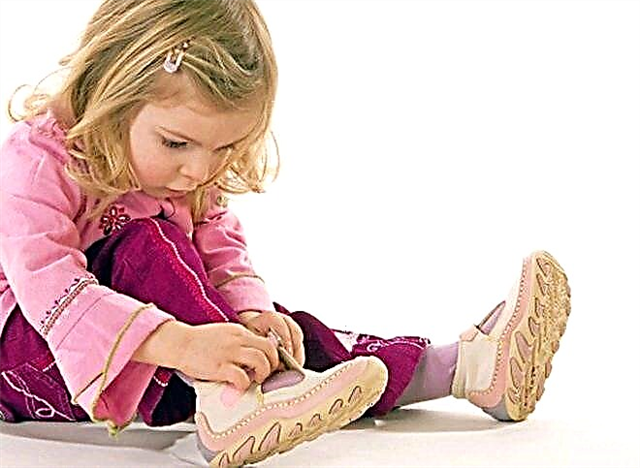
Distinguish fixed flat feet and flexible (mobile). Fixed flat feet are characterized by the appearance of signs of deformity all the time, mobile is manifested only when the child's legs are loaded. If the child is seated and the load is removed from the legs, then the arch of the foot takes on a normal appearance.
Symptoms and Signs
Trying to understand what flat feet look like in babies up to 2-3 years old, worried parents study medical literature, but they cannot find an answer to this question. By and large, up to 6-7 years of age, all children's feet look the same - flat.
Only cases of congenital flat feet have distinctive visual features. In this case, usually one foot is affected, not two. The sole of such children is convex, and the upper (back) part is unnaturally concave. The fingers are protruding, when placed in an upright position, the baby rests on the heel.

Signs that should alert parents of older children are as follows:
- The child quickly gets tired while walking, complains of pain in the legs. Painful sensations are pulling in nature and usually intensify in the evening.
- Legs may swell after a long walk. Puffiness can also occur in the evenings.
- A child with flat feet tramples shoes in a special way - the inner part of the sole and the heel from the inside are damaged.

If there are such signs, parents can use a regular millimeter ruler to understand how serious the situation is:
- The height of the arch of the foot in a seven-year-old child is 35 mm - no pathology.
- The height of the arch of the foot in a child of the same age is 25-35 mm - we are talking about longitudinal flat feet of the first degree.
- Arch height - 17-25 mm - the second degree of longitudinal flat feet.
- Arch height less than 17 mm - third degree.


The lower the height of the arch, the more pronounced the symptoms become:
- heavy gait, clumsiness;
- complaints of frequent headaches;
- visual deformation of the feet;
- pain in the legs and lower back;
- the occurrence of cramps of the lower extremities.

According to these clinical signs, it is possible to establish, even at home, the fact of the presence of flat feet of almost any kind.
The only exception is mobile platypodia, which usually proceeds without symptoms at all.
In 80% of children, flexible mobile flat feet tend to pass by itself closer to adolescence, but even if it persists, it absolutely does not manifest itself and does not bother a person. With him you can serve in the army, wear any shoes, play any sport, live without restrictions.
It should be remembered that in the initial stages, all symptoms look smoother. Therefore, for the initial stage, deformities of the feet are not characteristic, which are visible with the naked eye, but even at the earliest stage appear slight pain when walking and moderate swelling of the ankles in the evening.

At the intermittent stage (second), short-term cramps of the lower extremities can begin, the feeling of fatigue increases during exertion, pain in the legs, "shooting" into the knee joints.
At the combined stage (third), pain can appear even with minor exertion. Visually, the foot changes - the ankle begins to protrude more strongly from the inside than from the outside, the heel looks somewhat spread. The gait changes.
Transverse flat feet can be suspected by a number of characteristic features:
- The foot becomes wide. Sometimes this makes the task of buying shoes very difficult.
- "Painful bone" - the joint connecting the thumb and metatarsal bone becomes deformed, enlarged, and painful.
- A nail often grows on the thumb.
- The gait is tense, constrained.

Diagnostics
Parents may suspect that the child has flat feet, or they may not notice anything. Only a narrow specialist - an orthopedic surgeon - can determine exactly if there is a deformation of the feet. It is to him that you should go to the reception.
The doctor will examine the child's legs visually and prescribe several hardware examinations, which make it possible to state with great accuracy about the presence or absence of pathological conditions.
The doctor has no right to make a diagnosis only on the basis of examination. This requires taking X-rays of the feet with a load (in a standing position) in two projections.

In addition, there are several other diagnostic methods.
Plantography
This is a very common diagnostic method, it is widely used. These are a kind of footprints. You can make them on a special device - a plantograph.
The device is a frame with a stretched film. Below it is a layer of gauze with typographic ink. They stand on the film with two feet, and the laboratory assistant marks key points on the received footprints, by which the doctor can judge the severity of the disease. This study may be recommended for a normal or overweight adolescent child.
Small children and small adolescents are not allowed to plantography, since the lack of weight greatly distorts the research results, the prints are fuzzy, unreliable.

Podometry
In the course of such a study, using a stop meter, individual parts of the foot are measured and general proportions are calculated using special formulas. The stop meter is very accurate, it allows measurements to be made with millimeter precision.
This method, in combination with measurements with transomometers, which allow assessing the shock-absorbing properties of the foot, is often used to measure children's feet in dynamics, for example, during the correction of flat feet.

Podography
This is a method of recording gait features. It is not an independent diagnostic, but it helps the orthopedic doctor in assessing the nuances of the flat feet of a particular child.
The patient is put on special shoes with metal plates - contacts. In them you will have to walk along a special metal path.
The received electromagnetic data allow us to judge the angle of rotation of the foot, straightness of gait, step width, uniformity of load on the heel and toe.
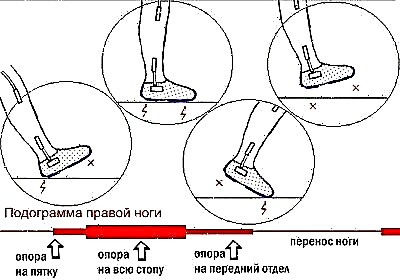
Electromyography
This is a method that allows you to assess the condition of the muscular system of the legs and feet. The procedure is usually indicated for paralytic flat feet, as well as for some traumatic types of foot pathology.
The electrodes can be applied superficially to the skin or can be inserted as very thin needles directly into the target muscles.
First, their impulse activity is measured at rest, and then under load.

Dangers and consequences
Many parents who have heard the diagnosis of flat feet from a pediatric orthopedist are interested in how dangerous it is. The answer to this question is obvious - improper amortization, which leads to flat feet, slowly but surely destructively affects other parts of the musculoskeletal system, joints, tendons.
First of all, the knee and hip joints are exposed to the negative effects of strong loads not foreseen by nature, the spine is bent with all the ensuing consequences up to the onset of disability.

Treatment
Flat feet are treated both conservatively and surgically, however, in pediatric practice, they always try to choose conservative methods that are more gentle and less traumatic. Let's talk about them in more detail.
Orthopedic shoes
Wearing orthopedic shoes is an integral part of flat feet therapy. You can buy it in a special orthopedic salon. It is better to get there with the written recommendations of an orthopedic surgeon, who will indicate all the parameters of the child's foot - height, width, points of deviation from the norm, angle of deviation, angle of rotation when walking.
If a pair that matches the exact parameters of the child's leg is not available, it will be made to order according to individual measurements.

There are strict requirements for orthopedic shoes. The initial stages of the disease usually do not need to wear a heavy medical orthopedic pair, it is quite enough to limit ourselves to orthopedic insoles, but already a moderate degree of flat feet may be an indication for special corrective shoes.
She usually has a high back that fixes the ankle, soft sole, orthopedic insoles, wide rounded or square toe, instep supports, low heel. This pair gives the leg additional stability and fixation.

Many parents find that wearing orthopedic shoes helps prevent flat feet. This is a dangerous delusion. Heavy and rather massive orthopedic shoes, designed specifically to correct foot deformities, are not suitable for prophylactic wear.
It is forced to buy it when the orthopedic doctor insists on it. Only insoles can be used prophylactically, and even then not all.

Massage and manual therapy
Manual techniques of influencing the child's feet in combination with other methods give very good results, they can correct flat feet. This treatment does not have a quick effect, but the benefits of systematic procedures will pleasantly surprise both parents and orthopedic surgeon.
The essence of the effect is kneading, improving blood circulation, elasticity of the calf muscles, muscles of the foot, the weakness of which led to the problem. After several courses, the muscles are tightened, the contour of the foot begins to take shape.
A chiropractor and a professional massage therapist will show parents how to properly influence the child's lower limbs and spine in order to further massage at home.

If manual influence is hard enough to reproduce at home, then any mother can master massage. A session includes several stages:
- impact on the foot (stroking, kneading);
- shin massage (movement from the bottom up, and not vice versa, kneading deep enough with an emphasis on the inner side of the leg);
- impact on the hips and buttocks (shallow, painless vibration technique is best for relieving stress from the knee and hip joint).
The massage can be finished by taking warm foot baths followed by intensive rubbing of the feet with a hard towel.

Physiotherapy
There are several dozen exercises that can help cure flat feet in children and adolescents, making the treatment process interesting and even enjoyable. But specific exercises can only be recommended by an exercise therapy doctor, who will take into account the type and stage of the anomaly in the development of the feet.
Children with flat feet are recommended at the initial stage visit the exercise therapy group in the polyclinic at the place of residence. There, a specialist will teach the child and his parents the basic techniques of therapeutic gymnastics.
It is advisable to conduct classes in a playful way, especially for children of preschool and primary school age, since classes should be enjoyable.

The following exercises are considered the most useful for foot deformities:
- walking on toes;
- walking on the heels;
- walking on the outside of the foot;
- rolls from toes to heels.
You can do all these exercises not only on a flat floor, but also on a special mat-applicator.

Orthopedic rugs with a more rigid texture are usually recommended for treatment, while softer rugs can be used for prevention.
A certain relief pattern, the degree of rigidity of the product will be prompted by the orthopedist who observes the child.
It is better to do the exercises barefoot. If you experience pain in the legs while exercising on the mat, you should stop, rest and try again. Forcing a child to overcome pain is not the best tactic.

Physiotherapy
Physiotherapy procedures, such as electrophoresis, magnetotherapy sessions, UHF, and so on, are designed to reduce pain in the lower extremities, improve blood supply, strengthen muscle tissue, therefore such procedures are an excellent addition to the main treatment - massage, gymnastics, wearing orthopedic shoes.
Correction of pathology becomes more effective. Most children's clinics have their own physiotherapy rooms; parents are only required to follow the schedule of visits to procedures.


Kinesio taping
The taping method is considered relatively new for orthopedics, whereas rehabilitation medicine has been familiar with it for a long time. The essence of the method is the imposition of special adhesive tapes that redistribute the load on certain muscles, supporting some muscle groups from the outside, and there by straining others.
In this case, the healing effect is present almost constantly - both during classes, and during normal walking, and during rest.
Tapes are considered the most effective for children with flat feet, when the leg is still growing. In adults, taping does not show such impressive results, although it is also quite often prescribed by orthopedists as a maintenance therapy.


You can wear the pasted tapes for several days, then they are changed. Applying the tapes on your own, at least at first, is undesirable, since the wrong positioning of the tape can lead to even more significant deformations.
The tape method is not considered as an independent treatment, but it can be used as part of complex therapy.

Operative treatment
Surgical treatment helps to get rid of flat feet of stages 3 and 4, when conservative methods cannot correct the anatomy of the foot.
With longitudinal flat feet, surgical correction of the longitudinal arch is performed with plastic tendons on the inner side of the foot.
Children from the age of 10 can have subtalar artoereisis - a minimally invasive operation with a small incision and a quick recovery period - in a day the child is at home.
A titanium implant is inserted into the subtalar sinus of the foot through a small incision. The longitudinal vaults are thus modified. The implant is removed by the age of 17-18, while the correct position of the fornices is maintained.

Longitudinal flat feet by the type of valgus pathology can be effectively eliminated using the so-called Evans operation. Surgeons lengthen the heel bone by implanting part of their own bone into it. The risk of rejection is minimal.
With transverse flat feet, two types of surgical intervention are used - on the tendons and soft tissues and on the bone tissue of the feet.
The second method removes, in particular, the protruding "painful bone", and sometimes several metatarsal bones. After the operation, the child will wear special sandals that will facilitate faster proper fusion.

After the operation, active physical activity is not recommended for a month, you should not go in for sports for 3 months.
Be sure to visit the physiotherapy room, where, in particular, electrophoresis is performed according to the CMT method - electrophoresis with the use of painkillers, mineral, anti-inflammatory drugs prescribed by a doctor.

Prevention
It is necessary to deal with the prevention of flat feet with the child from the moment when he takes the first steps. Parents should pay special attention to the correct development of the baby's legs. To do this, they must choose the right heel-fixing shoes with a soft sole.
A high back is a must for children up to 2-3 years old, after this age children usually have a more stable gait, and you can buy shoe pairs with a soft back, a small heel, an instep support.

Preventive exercises on massage mats are an excellent preventive measure. However, it is advisable to consult an orthopedist before purchasing such a floor covering.
These rugs are not recommended for children under 1 year old., but already from one and a half years you can use one of the products of the First Steps line. They are not as stiff as medicated applicators.
If parents can apply not only diligence, but also imagination to preventive activities, then daily walks along the massage path will turn into an exciting pastime and bring pleasure to the baby.

It will not be superfluous to recall that flat feet will be less likely if parents do not rush their baby in development.
Do not use walkers and jumpers before 9 months of age. Better yet, abandon these verticalizing devices altogether, entrusting the development of the child to nature - she knows better when and how he is destined to rise on his feet.
Ideally, if the child, before the first steps, went through all the stages of development of the spine provided for by evolution - sitting, crawling and only then - lifting to an upright position.
Prevention of flat feet at preschool age is very important, since the foot is intensively formed at this time. Make sure that your child does not wear flip-flops and flat slippers for long periods.
It is better to walk barefoot at home, and if there is an opportunity to let the child go to stomp with bare heels on the grass, sand, earth, then you should definitely use it.

Many parents, and especially representatives of the older generation - grandmothers and grandfathers - are categorically against walking barefoot, motivating their position by the fact that a barefoot child will certainly catch a cold and get sick.
In defense of bare feet, we note that it is almost impossible to catch a cold through the feet, because the vessels of the feet (the only ones in the human body!) have the ability to constrict and retain internal heat. Now, if the child sits on a cold surface with his booty, then hypothermia is very likely, and if the little one stomps barefoot on the floor, nothing bad will happen to him.

A child in 3-4 years old can buy special Bykov's insoles. They invest in shoes for 5-6 hours. You can make it a rule to put such insoles in a removable pair of shoes that the kid puts on in the kindergarten.
The amount of time that children spend in preschool corresponds exactly to the time recommended for wearing Bykov's insoles. You can buy them at an orthopedic salon.

A responsible attitude of parents to the child's nutrition will help to avoid such a problem (alas, common), such as obesity and overweight. Thin children are less prone to developing flat feet than plump toddlers, and this should not be forgotten.
On the table in the family where the child is growing, there should be regular foods containing calcium, magnesium, potassium, and essential vitamins. It is useful to teach boys and girls to eat jelly or jellied meat - they contribute to the normal growth of cartilage tissue.
In the diet of a preschooler, lean meat, fish, dairy products, fresh vegetables, fruits, cereals must be present.

Preventive massage of the feet and legs can be performed for the child 1-2 times a week. In this case, special attention should be paid to the toes, the arch of the foot, the inner and outer ribs of the foot.
Contrasting foot baths for prophylactic purposes should be carried out after each bath. Cold water is gradually poured into a bowl of warm water. This helps to improve blood circulation in the lower extremities.
In order to prevent the development of severe flat feet in a child, it is important at least visit a pediatric orthopedic surgeon twice a year. This specialist will be able to consider the pathology at the very initial stage in time and prescribe conservative treatment.
Dr. Komarovsky will tell you more about the causes, prevention and treatment of children's flat feet in the next video.

